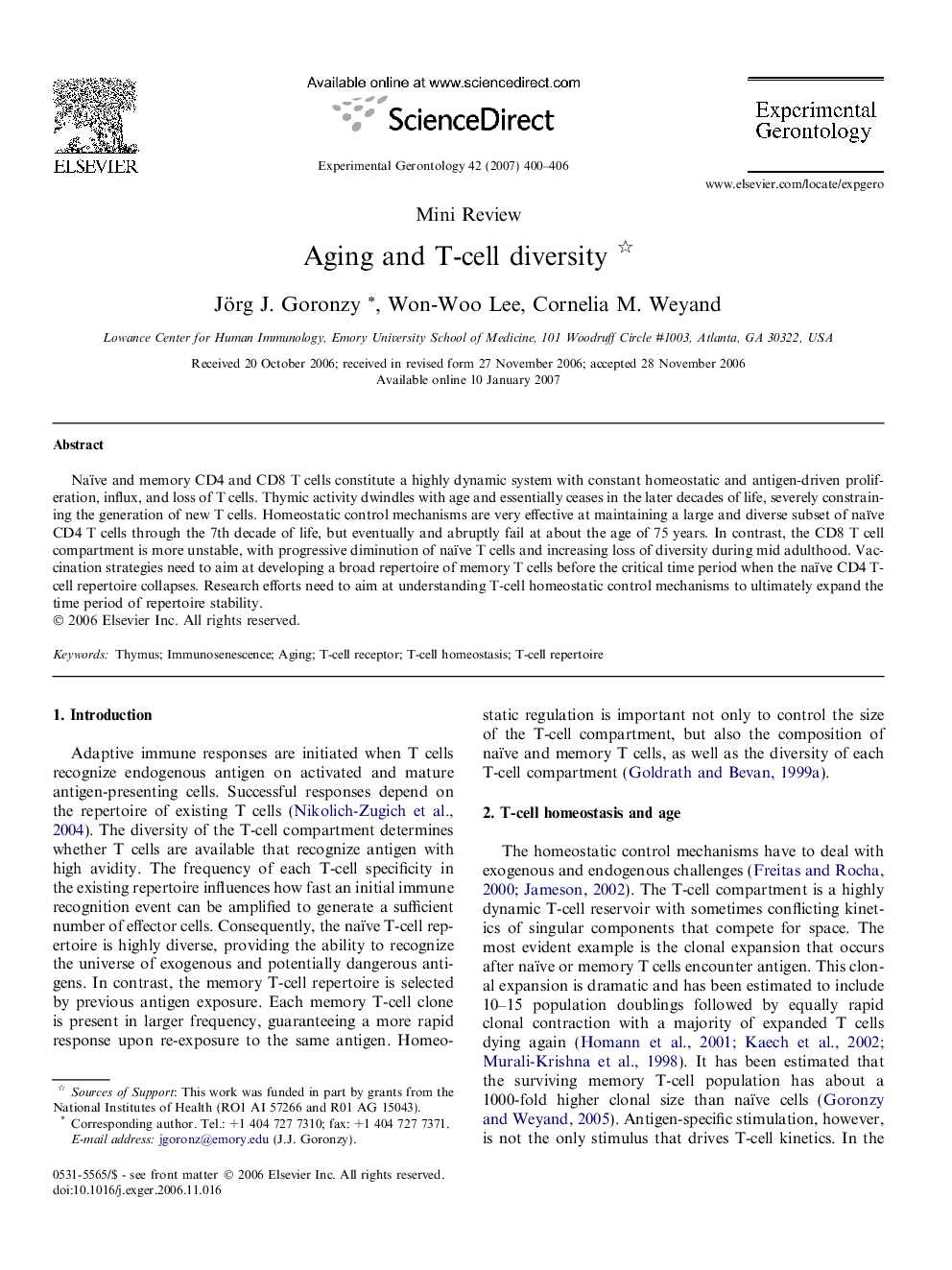| Article ID | Journal | Published Year | Pages | File Type |
|---|---|---|---|---|
| 1907316 | Experimental Gerontology | 2007 | 7 Pages |
Naïve and memory CD4 and CD8 T cells constitute a highly dynamic system with constant homeostatic and antigen-driven proliferation, influx, and loss of T cells. Thymic activity dwindles with age and essentially ceases in the later decades of life, severely constraining the generation of new T cells. Homeostatic control mechanisms are very effective at maintaining a large and diverse subset of naïve CD4 T cells through the 7th decade of life, but eventually and abruptly fail at about the age of 75 years. In contrast, the CD8 T cell compartment is more unstable, with progressive diminution of naïve T cells and increasing loss of diversity during mid adulthood. Vaccination strategies need to aim at developing a broad repertoire of memory T cells before the critical time period when the naïve CD4 T-cell repertoire collapses. Research efforts need to aim at understanding T-cell homeostatic control mechanisms to ultimately expand the time period of repertoire stability.
